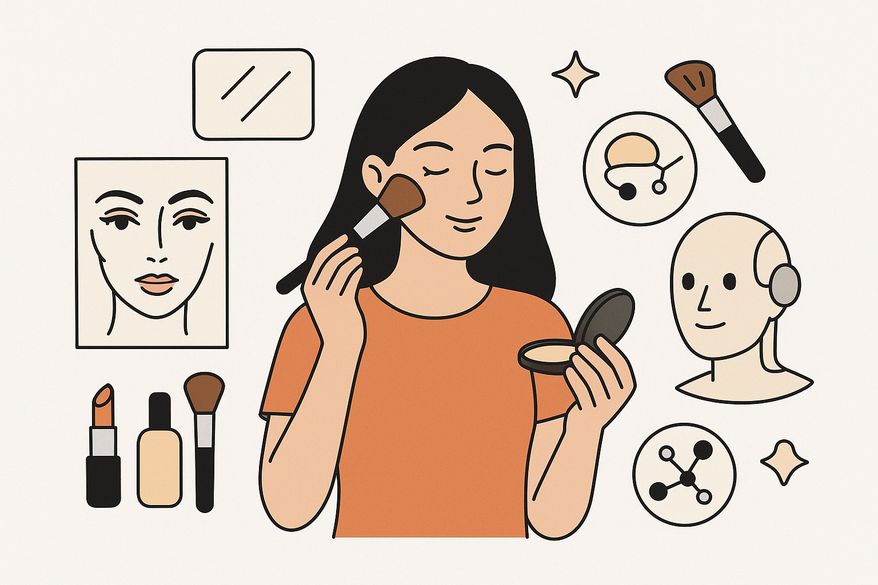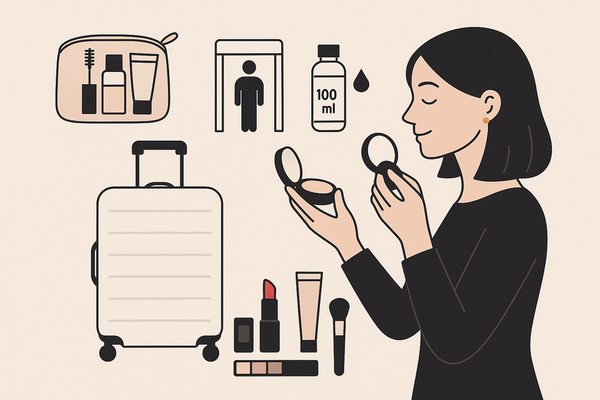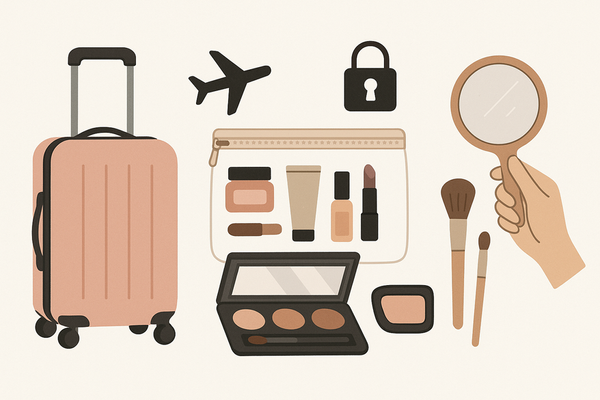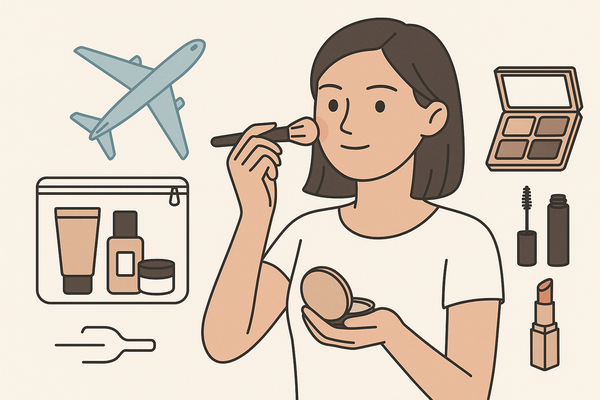Combining Manual and AI Makeup Tips: A Hybrid Approach to Personalized Beauty
Discover the benefits of combining manual and AI makeup tips for a personalized beauty routine that enhances creativity, precision, and trend-conscious style.

Estimated reading time: 10 minutes
Key Takeaways
- Hybrid beauty: Merging manual artistry with AI precision for personalized makeup.
- Complementary strengths: Manual skills add texture and emotion; AI delivers speed and data-driven insights.
- Workflow: Start with AI assessment, experiment virtually, then apply and refine manually.
- Tools to use: Applications like Makeup Check AI, YouCam Makeup, and ModiFace streamline the process.
- Best Practices: Balance automation with creativity, stay updated on trends, and maintain a blend card for your favorites.
Table of Contents
- Understanding Manual Makeup Techniques
- Exploring AI-Driven Makeup Tips
- The Intersection of Manual Skills and AI
- Practical Applications and Use Cases
- Tools, Apps, and Resources
- Expert Tips and Best Practices
- Conclusion
- FAQ
Understanding Manual Makeup Techniques
Manual makeup tips are the classic skills every artist learns. They rely on human touch and trained eyes. These include:
- Foundation application and blending by hand
- Contouring and highlighting with brushes or sponges
- Detailed eye and lip work with steady hand control
Benefits of Manual Makeup
- Custom artistry impossible for automation—hands create unique textures and effects.
- Tactile feedback lets you adjust pressure by feel on different areas of skin.
- Emotional connection builds trust and confidence between artist and client.
Scenarios Where Manual Skills Excel
- Editorial and bridal looks needing high-impact detail.
- Complex skin issues requiring bespoke textural corrections.
- Artistic expression and avant-garde customizations.
Real-World Example
As a freelance makeup artist, I often use sponges to blend foundation on mature skin. The squeeze and bounce of the sponge reveal fine lines and rough spots. This feedback guides me to apply lighter layers or add primer for a smooth finish.
Sources:
Exploring AI-Driven Makeup Tips
AI-driven makeup tips use computer vision and machine learning. They scan your face to suggest products and shades. Key features include:
- Real-time virtual try-ons on selfies or live video
- Automatic mapping of facial landmarks (eyes, lips, cheekbones)
- Comprehensive skin analysis for redness, hyperpigmentation, and undertones
- Data-driven trend recommendations from global user data
Popular AI Tools
Apps like YouCam Makeup and ModiFace offer virtual try-ons that speed up shade matching and inspire new looks before you buy.
Expert Observation
In trials with AI apps, users see instant shade swaps on their phones. This reduces wasted product and lets non-artists explore looks before purchasing.
Sources:
The Intersection of Manual Skills and AI
At this crossroads, AI gives facts and speed; manual artistry adds heart and soul. Together they deliver powerful looks.
Complementary Strengths
- AI offers objective analysis, quick previews, and precise mapping.
- Hands-on skill adds creativity, nuance, and textured blending.
Guidelines for Leveraging Both
- Begin with an AI assessment. Scan your face in an AI app for baseline data (Makeup Assessment Techniques Comparison).
- Virtually experiment with suggested palettes and styles.
- Select your preferred AI-recommended look.
- Apply manually, refining shades, blending edges, and adjusting for skin texture and lighting.
- Iterate: revisit AI for trend updates; tweak manually for personal flair.
Use Case in Practice
When preparing a bridal face, I run the bride’s selfie through an AI tool. It highlights areas with redness and suggests a color-correcting palette. Then I apply the base by hand, blending gently around the eyes and nose. This hybrid step speeds up prep and ensures a flawless finish.
Sources:
Practical Applications and Use Cases
Daily Makeup Routines
- Use AI virtual try-on to narrow product choices in minutes.
- Finish with manual blending for a natural, skin-like look.
Special Events
- AI suggests trending or theme-based looks for holidays or weddings.
- Artists adapt these looks on real faces, adding detail where cameras pick up shadows.
Trend Adoption and Innovation
- Leverage AI’s global data to master avant-garde trends.
- Artists interpret wild color combos or bold lines for real-world wear.
Testimonial
“Using AI first, then hands-on blending saved me 30 minutes on a runway show. The AI pop-colors were fun, but I added my own smudge-blend to soften the edges. Models looked runway-ready and camera-perfect.” – Professional makeup artist, New York City
Tools, Apps, and Resources
AI Makeup Tools
- Makeup Check AI for personalized shade mapping.
- YouCam Makeup for live try-ons.
- ModiFace for advanced skin analysis.
- Perfect Corp’s suite for trend tracking.
Essential Manual Tools and Products
- Foundation brushes of various shapes and sizes
- Beauty sponges for bouncy blending
- High-coverage foundations, concealers, and color correctors
- Blushes, bronzers, eyeshadows, and lipsticks for layering
For seamless integration of data-driven insights with hands-on expertise, explore Makeup Check AI. It offers a guided workflow from analysis to application.
Expert Tips and Best Practices
Actionable Tips
- Start with basic AI suggestions; refine with manual skills.
- Stay flexible—match AI ideas to your skin tone, face shape, and lighting.
- Update skills—try new AI tools and practice hands-on blending regularly.
Common Pitfalls and How to Avoid Them
- Over-relying on automation: Always validate AI suggestions for realism.
- Neglecting artistry: Keep human creativity front and center.
- Ignoring product compatibility: Test AI-recommended products on a patch before full application.
Pro Tip
Keep a “blend card” notebook. Note which AI palettes work best on your skin and which brush strokes give the smoothest transitions. This log helps you combine tech data and tactile notes over time.
Conclusion
Combining manual and AI makeup tips brings personalized precision, creative flexibility, efficiency, and trend innovation. This hybrid approach elevates both everyday routines and professional artistry. By using AI for data-driven insights and manual skills for texture and nuance, you achieve looks that suit your face, style, and occasion.
Key Benefits
- Personalized precision from AI analysis.
- Creative flexibility from human artistry.
- Time savings and consistent quality.
- Access to global trends with local execution.
Call to Action
We want to hear from you! Share your experiences and favorite tools or techniques in the comments. Explore related posts on advanced manual makeup techniques and new AI features for further learning. Subscribe to our newsletter or download our free AI-makeup starter guide to get personalized tips delivered straight to your inbox.
FAQ
- What are the main benefits of combining AI and manual makeup?
- AI offers rapid analysis and trend data, while manual artistry delivers texture, emotion, and personalized finishes—together they create flawless, customized looks.
- Which tools are best for AI-driven shade matching?
- Makeup Check AI, YouCam Makeup, and ModiFace are top choices for accurate virtual try-ons and personalized palette suggestions.
- How can I ensure AI recommendations look natural?
- Always test AI-suggested products on a small patch, then refine application manually—blend edges and adjust layers to complement your skin’s texture.
- Can manual skills compensate for AI limitations?
- Yes—human artists add nuanced blending, creative flair, and textural adjustments that AI cannot replicate on its own.
- How often should I update my AI makeup profile?
- Review and refresh your AI settings every 4–6 weeks to capture skin changes, new trends, and seasonal undertones.




